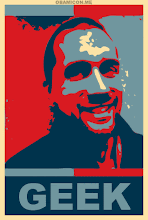SHOES, AMAZON, MOVIES, TRAINING
Now, why can’t we/don’t we do this for learning? Imagine now you’re looking for a specific piece of content from a course. “People who found the content in this course valuable liked these courses.” But we can’t do it by hand. We can’t hand cobble all these X’s and O’s…these puzzle pieces together. It should be easier…SMARTER…for learners to find more specifically just WHAT THEY WANT.
“I have a visceral reaction to technological hype. Remember when virtual worlds were going to be the cureall for everything?” ß I love this guy.
STRUCTURE, STRUCTURE
“It’s hard to get stuff to stick in our head. We’re better at pattern matching.” No more knowledge dump/knowledge test. Continual innovation in how we learn, how we train, how we teach is the ONLY way to continue to cycle…continue to improve. Individual innovation is busted. Creative friction is key to this change, key to this innovation, and key to starting the discussion re: moving our training from e-learning to smart content…to intelligent systems.
“How many of you have portals in your organization? How many of you have multiple portals? How the hell do you find anything?” ß It’s like he’s reading my mind at this point…honestly, this is one of the GREATEST burdens to our day to day. Why must the material in the portal be different from the material in the LMS?
WHERE DO I FIND IT ALL?
Having the components accessible is key to allowing the learner to practice, re-practice, and re-learn what it is they need to do their job. Knowledge should be a whole learning experience. And it should be outlined as such. You don’t need to re-create, but you do need to re-purpose.
Again, on a personal note, a colleague of mine and I just had a discussion re: including more ‘rich’ materials for takeaway after class or after the learning experience (in the case of CBT training). We shouldn’t be just focusing on what we need for the day…for the class…for the CBT…but what that learner needs 3 months…6 months down the road. While I feel like I’ve had this discussion before, I feel it falling into place a bit more easily here.
CONTENT MODELS
You separate the pieces out by Introduction, Body, Job Aids, Assessments, and so on.
Once you have it managed like this, you can have a search engine that can comprehend the structure and, wonder of wonders – searchable content. You’re not going to get it right the first time, you’re going to need flexibility to do this, but the benefits are great.
On a personal note (again), this seems doable, but we will need to bring someone in with more XML/CSS knowledge than any of our team currently has. It will take some money, some time, but with those two small things, what a great, great thing for our training materials to be indexed, managed, and made more accessible than ever before?
“I don’t care about
big data…I want big insights. It’s mining the big data that matters.”
That quote is SO indicative of the problem. We focus on the big piece…the module, the class, the agenda…and we focus on it as one piece. “What do we do tomorrow?” You start thinking about granulating your content and describing it. It won’t pay off right away. We overwrite in eLearning already. We should focus more on “What’s the least I can do for you?”…be more minimalist.
CONCLUSION
What can I say? It’s what I knew already, at least what the problem is. But the answer has eluded…not completely, but enough. WithClark ’s
insight and very plain-spoken solution, I think it’s time to refocus our
efforts on granulating…on focusing on the more individual elements of our
product, not just our product as one concrete block. As I mentioned before, I know Clark , I think he’s brilliant, and this presentation
proved no different. My hope is that
this is the first step in a long walk when I get back home…
Formal Learning + Performance Support + Social Media Systems = TRUE eLearning
That quote is SO indicative of the problem. We focus on the big piece…the module, the class, the agenda…and we focus on it as one piece. “What do we do tomorrow?” You start thinking about granulating your content and describing it. It won’t pay off right away. We overwrite in eLearning already. We should focus more on “What’s the least I can do for you?”…be more minimalist.
CONCLUSION
What can I say? It’s what I knew already, at least what the problem is. But the answer has eluded…not completely, but enough. With
Formal Learning + Performance Support + Social Media Systems = TRUE eLearning


No comments:
Post a Comment